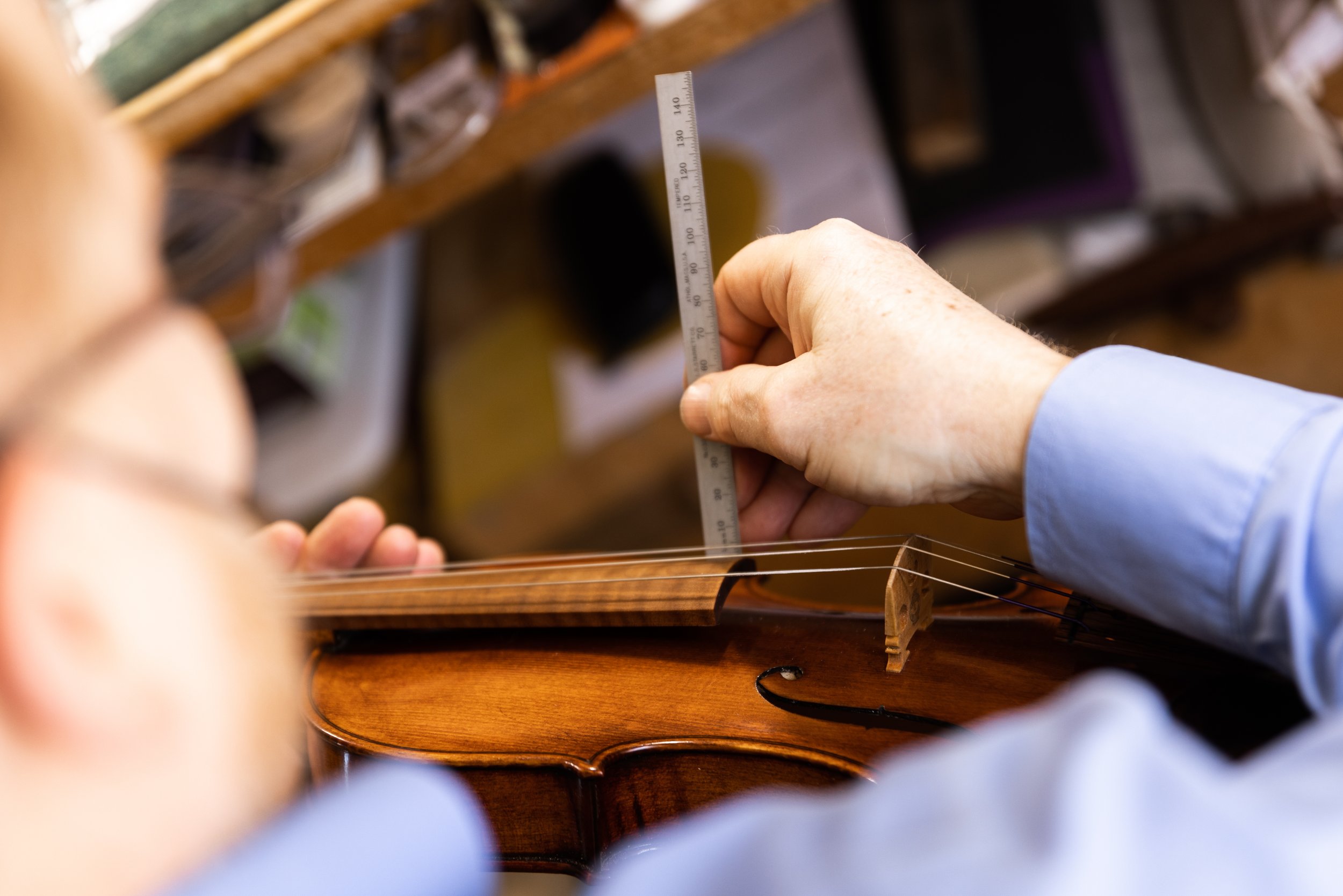MODERN VIOLAS
It was remarked once, that if Stradivari walked into our workshop in Vermont, he would be able to sit down at a bench and work in pretty much the same way as he once did in the 17th and 18th centuries. The tools laid out before him would be similar; the forms, chisels, woods, planes all would be reminiscent or the same as his original workshop….aided perhaps by electric lights and a few power tools.
But while many of the same tools are used to create the V. Richelieu ™️ instruments, our understanding of tone, resonance and wood has advanced considerably. Modern physics (and clever engineering) has given us understanding of how we perceive sound, how acoustics work, and better insight into the materials we use. Strings, for example, have moved well beyond the gut strings of old and are now the results of painstaking research by MIT trained engineers schooled in acoustical tone science.
Behind our workshop, filled with all manner of hand tools, are devices designed to measure and evaluate the most important ingredient in our instruments: the wood. We measure carefully each plank or quarter-sawn billet for resonance, density and moisture content….and these collective measurements determine where the wood will be used.
We know for example, that woods with certain properties are better for larger instruments. Our violin wood is fundamentally different from our large viola wood which in turn is different from small viola wood. Some of the differences can be gleaned visually or using age-old methods of tapping, but machines and technology have brought our understanding of wood to a far heightened plateau and the results are palpably obvious.
V. Richelieu™️ sources its wood from forests of Europe and America. We would never outsource our making to Asian factories so we rely on wood sources that are reliable and sustainable—and managed by foresters that understand how woods taken for tonewood are different from woods earmarked for building or cabinetmaking. Our forestry partners are critical to our success. Still, we are forever amazed how maples and spruce woods from different parts of the world vary.
Our home in Vermont is a special place and our fair state has a rich history in all sorts of crafts. We share our Green Mountains with technical giants (our owner, Kathy Reilly, grew up in an IBM household) and perhaps it is this shared space that allows us to develop an old world craft in a modern context—and find the joy in merging the old with the new, utilizing the best of both to create instruments that beautifully pay tribute to skilled workmanship to enable masterful musicianship.


